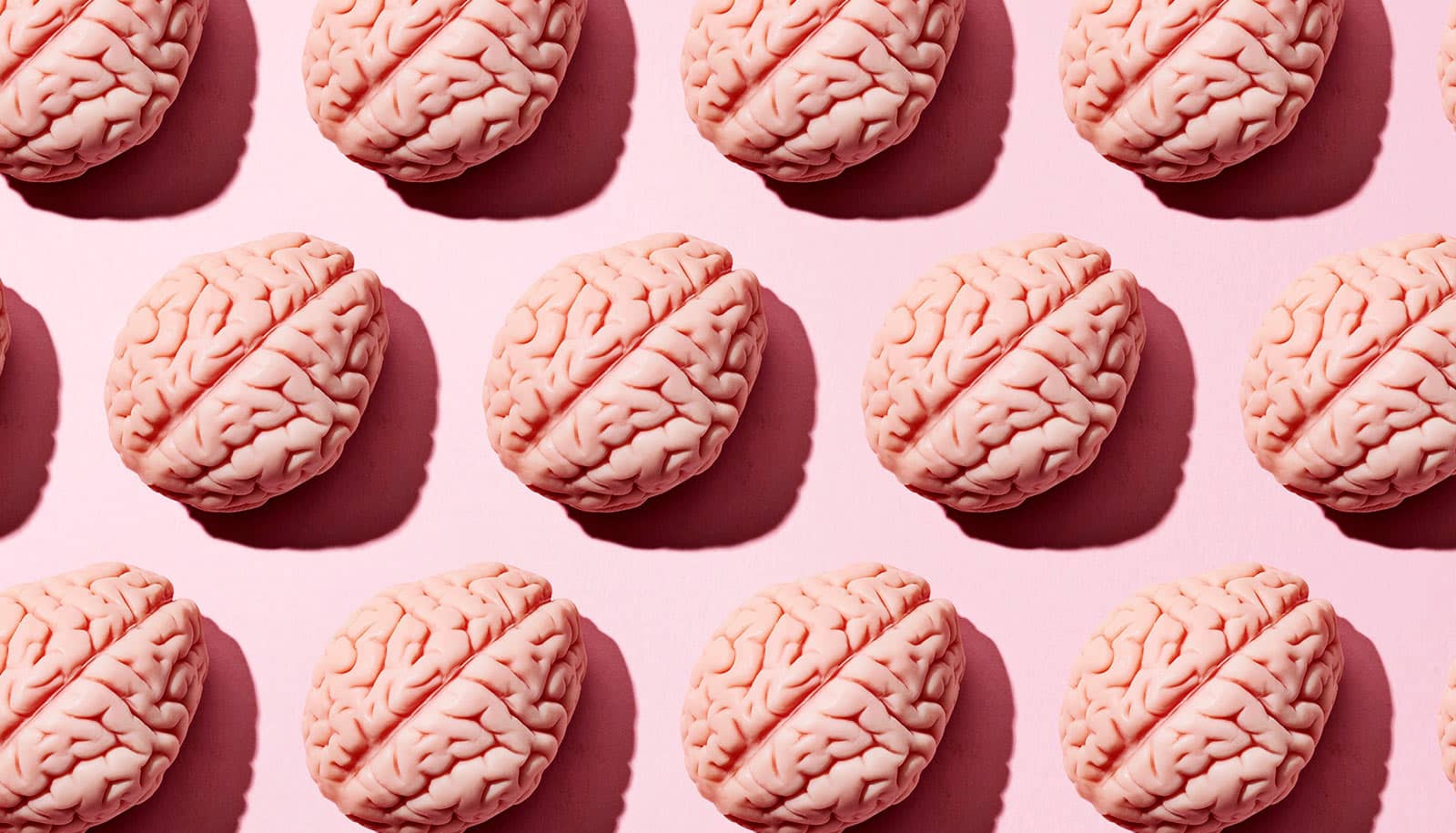Alcohol may endanger the future cognitive health of people who experience facial redness when drinking, research with cell cultures and mice suggests.
In the presence of alcohol, a defective version of the aldehyde dehydrogenase 2 gene in human cell cultures and mice leads to biochemical changes associated with Alzheimer’s disease.
This mutation in aldehyde dehydrogenase 2, or ALDH2, is associated with facial redness following alcohol consumption. It causes the activity of the enzyme to be greatly reduced, resulting in the buildup of acetaldehyde, a toxic product of alcohol metabolism. The body responds to the presence of the toxin with skin flushing and inflammation. The mutation is prevalent among people from East Asia.
“…free radicals form toxic aldehydes, and the job of ALDH2 is to remove these toxic chemicals.”
The mutation occurs in about 560 million people, or about 8% of the world’s population, says Daria Mochly-Rosen, professor of chemical and systems biology at the Stanford University School of Medicine. Understanding the relationship of alcohol and genes linked to Alzheimer’s disease will have broad consequences, she says, since a large group of people may unknowingly be harming their future health by regularly consuming alcohol.
“Our data suggest that alcohol and Alzheimer’s disease-prone genes may put humans at greater risk of Alzheimer’s onset and progression,” Mochly-Rosen says. “This is based on our patient-derived cell studies and our animal studies, so an epidemiological study in humans should be carried out in the future.”
Mochly-Rosen is the senior author of the study in Acta Neuropathologica Communications. The lead author is postdoctoral scholar Amit Joshi.
Free radicals and ALDH2
Epidemiological studies in East Asian populations have previously suggested an association between the mutation in ALDH2 that causes facial flushing and Alzheimer’s disease. However, there have also been other studies that didn’t find an association.
To further explore a possible role for ALDH2, the authors of the current study examined cell cultures made using cells from 20 patients with Alzheimer’s disease. One culture had the ALDH2 mutation, also known as ALDH2*2. While the amount of ALDH2*2 protein in this sample matched the level of ALDH2 protein in normal cells, the mutant protein had only a fraction of the ability to break down acetaldehyde.
Compared to normal cells, the ALDH2*2 cells had more free radicals and more 4-HNE, another toxic chemical that’s normally processed by ALDH2.
“Free radicals are formed when we have fever, when we have chronic diseases, when we are stressed; free radicals are formed under many kinds of pathological stimuli. These free radicals form toxic aldehydes, and the job of ALDH2 is to remove these toxic chemicals,” Mochly-Rosen says. “Once these aldehydes accumulate, the first organelles that they damage are the organelles that contain the enzyme that is supposed to get rid of them: the mitochondria.”
This vicious cycle ultimately leads to reduced mitochondrial activity, increased free radical formation by the damaged mitochondria, and, in the case of Alzheimer’s disease, to death of neurons.
The level of free radicals was restored to normal following the addition of Alda-1, a small molecule that “fixes” ALDH2*2 by binding to the catalytic site and restoring the enzyme to a functional structure, Mochly-Rosen says.
Mochly-Rosen and her colleagues discovered Alda-1 as an activator of ALDH2*2 in 2008. Alda-1 also activates the nonmutant ALDH2 and therefore may benefit more people, she says. Clinical trials are in progress to test the usefulness of Alda-1-like molecules as a treatment for a variety of health conditions. Mochly-Rosen consults for these clinical trials but does not own stocks in the pharmaceutical company conducting them. The company did not fund any of the current research.
Adding alcohol to cells with either ALDH2 or ALDH2*2 derived from patients with Alzheimer’s disease led to an increase in free radicals; the effect was greater, though, in the ALDH2*2 cells. Alda-1 reversed these effects, though not completely. These results indicate that alcohol damages cells normally protected by ALDH2 and that this damage is more severe in cells from patients with a genetic form of Alzheimer’s disease, the study reports.
Mice and alcohol
To further understand the link between alcohol and ALDH2, the researchers studied mice that carry ALDH2*2. The mice were injected with alcohol each day for 11 weeks to simulate chronic alcohol use.
“The animals were given one gram per kilogram per day, which is equivalent to about four to five drinks for the animal. But since mice metabolize alcohol much faster than humans, it comes to about two drinks a day,” Joshi says.
Consistent with their results in cell cultures, the researchers saw that mice with the ALDH2*2 gene produced more free radicals than normal mice when provided with alcohol. The mutant mice also accumulated beta-amyloid protein fragments and activated tau protein more than normal mice. Both of these changes are molecular signatures for Alzheimer’s disease. Treatment with Alda-1 reduced the accumulation of both of these toxic proteins.
The ALDH2*2 mice also showed an increase in neuroinflammatory signs following their injection with alcohol compared with normal mice. Neuroinflammation, or inflammation of the nervous system, is normally caused by injury, infection, and even the aging process, but recent studies have found that chronic neuroinflammation worsens the progression of neurodegenerative diseases, such as Alzheimer’s disease. Treatment with Alda-1 reduced the accumulation of these neuroinflammatory proteins in mice.
The researchers also prepared cell cultures from the brains of normal and ALDH2*2 mice and found that alcohol led to increased levels of free radicals and cell-death proteins not only in neurons, but in astrocytes, as well. Astrocytes are cells found in the central nervous system that provide support for neuronal function and maintenance, but that can also contribute to neuroinflammation. Treatment with Alda-1 reduced the alcohol-induced changes in the cell cultures, the study found.
Could a compound treat Alzheimer’s?
The findings in the study point to a previously undiscovered role of alcohol and ALDH2 in Alzheimer’s disease. Since the work was done in cell cultures and mice, further validation is needed in large epidemiological studies of humans to see whether alcohol drinkers who have the ALDH2*2 mutation develop Alzheimer’s disease at a higher-than-average rate, Mochly-Rosen says. Such studies could help determine whether decreased alcohol consumption and treatment with compounds, such as Alda-1, might reduce the progression and burden of Alzheimer’s disease in the world’s aging population.
There have also been other studies demonstrating that ALDH2*2 increases the risk of developing cancer in the esophagus. Because ALDH2 is so important for human health, Che-Hong Chen, a senior research scientist in the Mochly-Rosen Lab, organized the Stanford-Taiwan ALDH2 Deficiency Research Consortium, or STAR. This group aims to promote research and public awareness about the ALDH2 mutation in East Asia, where nearly half the population carries it.
Alda-1-like compounds may prove to aid in treatment to reduce the risk of Alzheimer’s disease in humans, Mochly-Rosen says.
Support for the work came from the National Institute on Alcohol Abuse and Alcoholism, as well as the National Institute of General Medical Sciences, the National Institute of Diabetes and Digestive and Kidney Diseases, the National Institute on Aging, the Paul and Daisy Soros Fellowships for New Americans, and the Stanford Child Health Research Institute Transdisciplinary Initiatives Program. Stanford’s department of Chemical and Systems Biology also supported this work.
Source: Jack J. Lee for Stanford University



